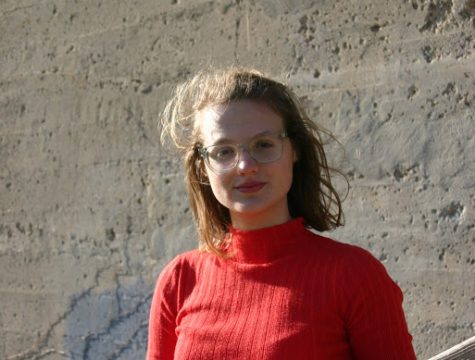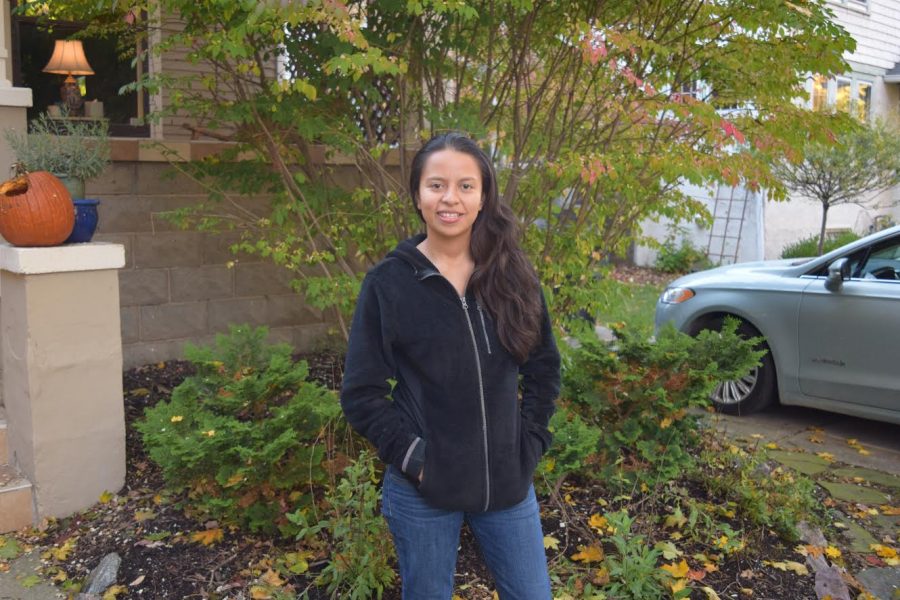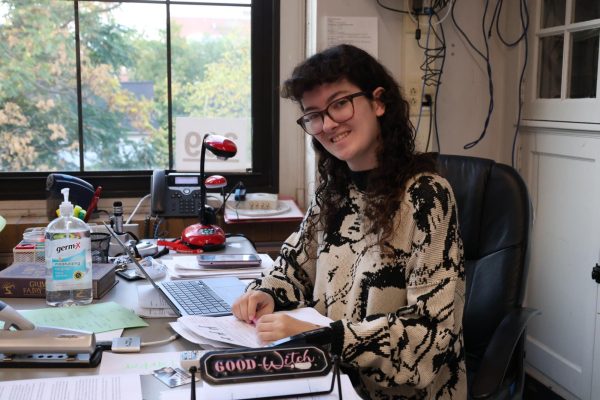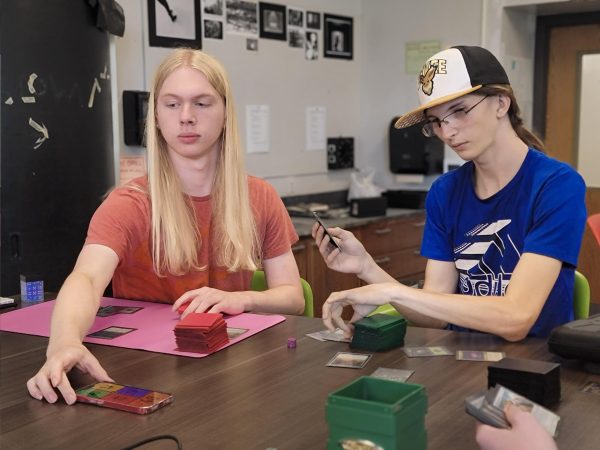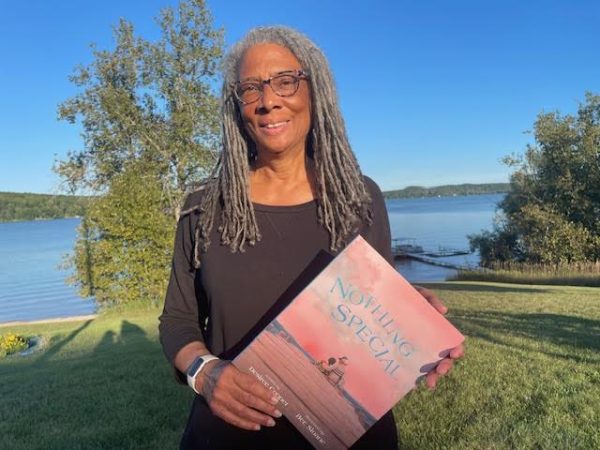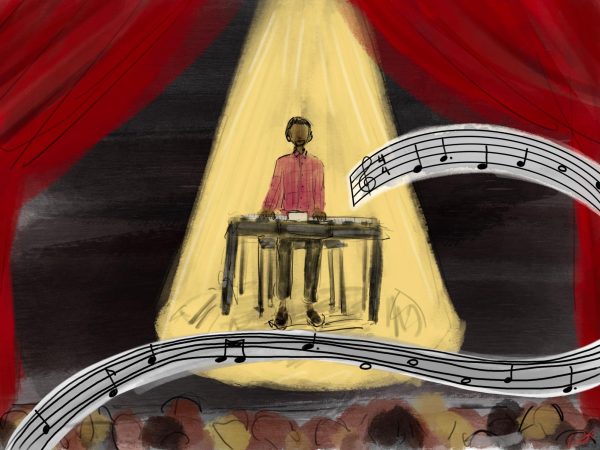Crossing The Border
As a 25-year-old Guatemalan Sandy Lopez-Vasquez was facing daily struggles such as trying to find work while living in fear of the horrors inflicted by gangs, murderers and rapists. These horrors were becoming routine, and Lopez-Vasquez knew she had to leave.
Finally one Friday in the spring of 2016, Lopez-Vasquez and her husband started their journey of immigration to the United States. They were packed into a trailer with 92 other people ranging in age from young children to people who were old and grayed. For a bathroom, there was a covered bucket in the corner. “They said that we were going to have to be in the trailer for at least a day and a half, in the pitch dark, and the bathroom was so uncomfortable,” Lopez-Vasquez said.
“When they told me that I had to get up into this windowless trailer it gave me a lot of fear,” Lopez-Vasquez said. “I was really wondering what was going to happen to me because I had never heard that I would have to be put in a trailer.”
Lopez-Vasquez and her husband stayed in the trailer for a day and a half straight until they reached Mexico. Once there, they encountered many checkpoints by the highway where immigration officers checked cars for illegal immigrants. In order to avoid being discovered hiding in the trailer, the group would have to get out and walk for hours at a time while the empty trailer drove by the checkpoints.
“We would walk for like four hours, and then we would get back in the trailer, and then have to get out again and walk for another four hours, and it just kept on going like that,” Lopez-Vasquez said.
While travelling through Mexico, Lopez-Vasquez and her group stayed in what she called “bodegas”.
“Bodegas are like little houses, big rooms. Nothing more than empty rooms. Like, big rooms. The guides that took us had contacts and they would let us use these houses,” Lopez-Vasquez described.
Lopez-Vasquez would wait in the bodegas for a varied amount of time. While Lopez-Vasquez never had to wait in a bodega for too long, she met people who had been staying in the same bodega for weeks, even a month.
“Really, the hardest thing was being in these empty rooms and we couldn’t leave.” Lopez-Vasquez said. “We had to stay there for a couple days, up to a week. Then they would take us to these other bodegas and again we wouldn’t be able to leave, we’d be all crammed in there.”
The situation for meals was also not ideal. Lopez-Vasquez said that while they did have food, most of the time they would just eat junk food with little to no nutritional value: chips, crackers, cookies, etc.
“Sometimes in the bodegas there were people who would cook for us,” Lopez-Vasquez said. “And the food was more or less good, but in others, at least in one, even I had to cook. And I’m not a very good cook,I had to cook for everybody, that was a very ugly bodega. Even though I tried to cook, it wasn’t very hygienic. I did my best to cook, but I didn’t eat anything there.”
After traveling through Mexico for a few weeks, Lopez-Vasquez finally reached the U.S.- Mexico border. While her journey through Mexico had been ridden with struggles, the hardest part was now arriving. The guide woke up Lopez-Vasquez, her husband and a group of nine other immigrants at 6 a.m. to start their journey. The little food and water they were provided with seemed to feel like nothing under the beating desert sun.
“I had spent all this time not really eating well, and I just didn’t have the strength, especially the sun, the sun was so hot,” Lopez-Vasquez said. “We just kept walking and we just kept walking and by 4 p.m. I just couldn’t walk anymore. My legs just, I don’t know, they just gave out. It wasn’t that they were painful, they just gave out.”
Lopez-Vasquez told the guide she just could not go on anymore. The guide warned her against it. “The immigration is going to get you if you stay,” the guide told Lopez-Vasquez and her husband. But, ultimately, the group had to keep moving, something Lopez-Vasquez was not able to do. Lopez-Vasquez and her husband were left behind near a well with a compass, a cell phone, some tortillas and a can of tuna fish.
They rested for a few hours, but at this point they didn’t know what to do. The couple decided that the best way to survive would be to be picked up by immigration. “So then we waited, but no immigration patrol passes or anything.” Lopez-Vasquez said. “Just when you want an immigration patrol to pass, none come by!”
As the hours passed, the situation seemed to get worse. “It was getting dark and night was falling we didn’t know what we would find, all sorts of snakes and things.” Lopez-Vasquez said.
The cell phone they had only had two programmed numbers it could call, and neither of them were any use. Lopez-Vasquez couldn’t call her family or immigration. But then, Lopez-Vasquez realized one of the numbers had a nine in it and two ones. By deleting the other numbers in the sequence she was left with 9-1-1. So, she called 9-1-1 and her husband, who speaks English, told them where they were and asked them to pick them up.
Two immigration men arrived and picked up Lopez-Vasquez and her husband. The immigration officers acted cordial towards them. “We had called them and so they knew we weren’t going to try and escape,” Lopez-Vasquez said.
Lopez-Vaquez and her husband were taken to a place with other immigrants to gather their information.
“They put us into what we all called “frozen rooms”.” Lopez-Vasquez said. “They were really cold rooms. It’s a really cold room and they have you remove your shoes and your jewelry and they take all of your belongings. You have to take off your belt, everything that is like a cord. And then they took everything away.”
After that Lopez-Vasquez and ten other women were taken into a big cell and were supposed to sleep. They were no beds or blankets, only cement benches, walls and floors. Very early the next morning, Lopez-Vasquez, her husband and the other immigrants were bused to a detention center.
The first thing they did was see a doctor. While Lopez-Vasquez didn’t have any injuries, many other people were in pretty bad shape: scratches, rashes, allergic reactions or injuries. They got uniforms, underwear and an identification bracelet, but at the beginning they barely ate and were only fed two sandwiches a day.
“When they took us from the first detention center in the bus my husband was with me, but when we arrived at the center they again separated the men and the women.” Lopez-Vasquez said. “We didn’t what happened to them, we didn’t know if they were taking them somewhere else, I didn’t know what happened to him.”
This detention center was nice. There was a library where people read books and created art with paper and markers. There was a place where people could fix their hair and an open area where people were outside and played soccer and exercised. Uniforms were washed daily and there were showers. Lopez-Vasquez had weekly contact with her family and her immigration lawyer.
“We basically just waited,” Lopez-Vasquez said. “It was like a prison in that you couldn’t leave, you were fenced in.”
After staying in this detention center for a month, all the women were transferred to a different detention center.
“This was the ugly part, I didn’t like this at all,” Lopez-Vasquez said. “At night time, about nine o’clock at night, we’d already had breakfast, lunch and dinner, they came to take us. They took us out and took us by bus again to these “freezing cells” that we call them. This time they kind of treated us like criminals. They put handcuffs on our wrists, chains around our waist, and on the legs, all the women, to take us to the other detention center. We were like, really, prisoners.”
Lopez-Vasquez did not like this new detention center.
“This one was really ugly,” said Lopez-Vasquez. “There were very tiny rooms [with] maybe 30 people in these rooms. At this place we didn’t know whether it was day or night, we just had no idea what time it was. They only took us out at meal times. This place had nothing. There was no opportunity to go outside at all. They just had a little place you could play basketball but it was still closed inside. No place to get fresh air.”
While staying at the detention centers, the immigrants were constantly interviewed by officials. The officials try and determine whether a case is “credible” or “not credible”. If they decide a person’s case is credible, the person has the opportunity to go in front of an immigration judge to be considered for asylum.
“They believed that I had a credible case of having reasons to fear returning to Guatemala,” said Lopez-Vasquez. “After interviewing me they thought that I had a credible case to be able to say in front of a judge, instead of deporting me right away. In this case, they felt that I was credible enough that I could leave for bail, not that definitely I wouldn’t be deported later.”
After 17 days of traveling to get to the border and two months of waiting in detention centers, Sandy Lopez-Vasquez was reconnected with her family, like her mother and some of her sisters, in Michigan. Right now, she hopes to learn English. (This interview was translated)
“I would want young people here to never have to go through what I went through,” said Lopez-Vasquez.
